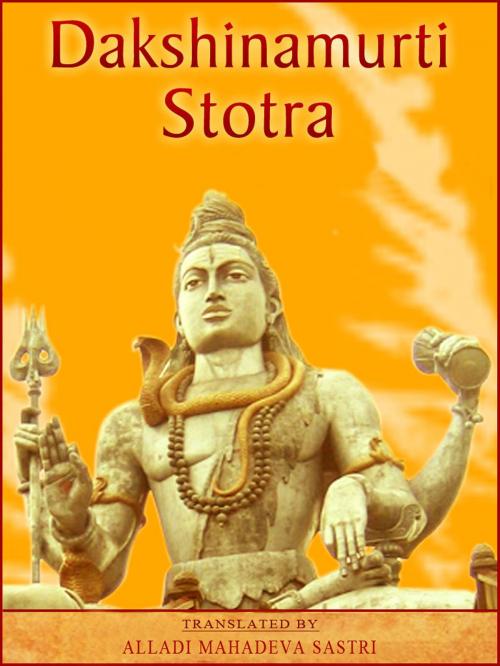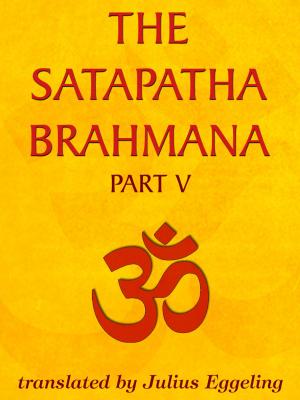| Author: | Alladi Mahadeva Sastri | ISBN: | 9781623941321 |
| Publisher: | AppsPublisher | Publication: | October 14, 2012 |
| Imprint: | Language: | English |
| Author: | Alladi Mahadeva Sastri |
| ISBN: | 9781623941321 |
| Publisher: | AppsPublisher |
| Publication: | October 14, 2012 |
| Imprint: | |
| Language: | English |
Dakshinamurti Stotra
translated by Alladi Mahadeva Sastri
Dakshinamurti is an aspect of the Hindu god Shiva, as a teacher. Dakshinamurti literally means 'one who is facing south.' An image of Shiva as Dakshinamurti is part of every temple to Shiva, installed facing south.
This work primarily contains the Dakshinamurti Stotra, along with commentary by the translator, as well as two shorter works, the Pranava-Vartika and the Dakshinamurti-Upanishad. The Dakshinamurti Stotra is a treatise on Hindu philosophy, attributed to the sage Sankaracharya, comparing various schools of thought, including Buddhism, concerning the nature of reality.
"Whoso hath highest love for God, and for the Guru as for God, to that Mahatman, the truths here taught shine in full." (Svetasvatara-Upanishad, VI., 23). These are the words with which the Upanishad concludes its teaching and with which Suresvaracharya, like many other teachers, closes his exposition of the Vedanta Doctrine. They form the key-note of the whole Vedic Religion as of all other Religious systems based on Revelation. It behoves, therefore, the student of spiritual wisdom,—nay, it behoves every seeker after Truth,—to study and understand the principle enunciated in the passage quoted above. To this end we have first to determine what place Revelation occupies in a religious system and how it helps man to realise truth. The Leda which is composed of different parts embodying teachings suited to different classes of people is, even in the form in which we have it, one of the oldest, if not the oldest, Scriptures accepted by large masses of people, revealing truths derived from the most trustworthy source, from God Himself. It may, therefore, be taken as the type of Revelation intended to help the growth of man towards the attainment of his highest end.
Dakshinamurti Stotra
translated by Alladi Mahadeva Sastri
Dakshinamurti is an aspect of the Hindu god Shiva, as a teacher. Dakshinamurti literally means 'one who is facing south.' An image of Shiva as Dakshinamurti is part of every temple to Shiva, installed facing south.
This work primarily contains the Dakshinamurti Stotra, along with commentary by the translator, as well as two shorter works, the Pranava-Vartika and the Dakshinamurti-Upanishad. The Dakshinamurti Stotra is a treatise on Hindu philosophy, attributed to the sage Sankaracharya, comparing various schools of thought, including Buddhism, concerning the nature of reality.
"Whoso hath highest love for God, and for the Guru as for God, to that Mahatman, the truths here taught shine in full." (Svetasvatara-Upanishad, VI., 23). These are the words with which the Upanishad concludes its teaching and with which Suresvaracharya, like many other teachers, closes his exposition of the Vedanta Doctrine. They form the key-note of the whole Vedic Religion as of all other Religious systems based on Revelation. It behoves, therefore, the student of spiritual wisdom,—nay, it behoves every seeker after Truth,—to study and understand the principle enunciated in the passage quoted above. To this end we have first to determine what place Revelation occupies in a religious system and how it helps man to realise truth. The Leda which is composed of different parts embodying teachings suited to different classes of people is, even in the form in which we have it, one of the oldest, if not the oldest, Scriptures accepted by large masses of people, revealing truths derived from the most trustworthy source, from God Himself. It may, therefore, be taken as the type of Revelation intended to help the growth of man towards the attainment of his highest end.















